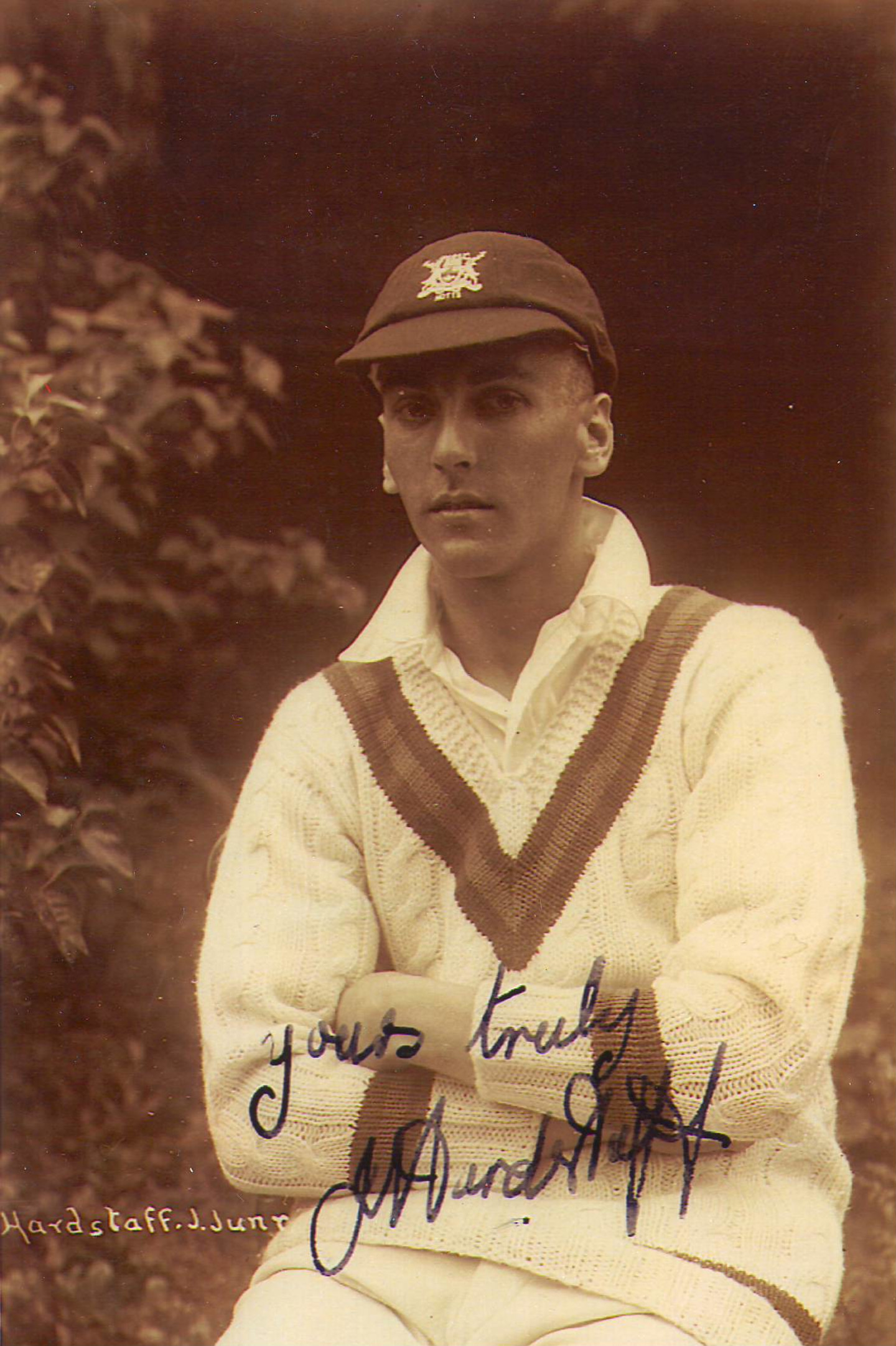Regarded as one of the most technically gifted batsmen of his generation, Joe Hardstaff jnr was recommended to Nottinghamshire by Harold Larwood and proved his worth with a distinguished career in domestic and international cricket.
He made an unbeaten half century in his second Championship match but faced three seasons of nurture, with captain Arthur Carr using Hardstaff down the order.
Hardstaff was let off the leash in 1934 and scored 1,817 runs including four hundreds. He made the number four position his own and made his Test debut against South Africa in 1935 - earning selection for the MCC tour of Australia and New Zealand in 1935-36 - and scoring 1,044 runs in First-Class matches.
After a dip in form on the Ashes tour of 1936-37, Hardstaff bounced back for Nottinghamshire in 1937, with three double-hundreds and five hundreds contributing to a season’s haul of 2,540 runs. He won the Walter Lawrence Trophy for the fastest century of the season - 51 minutes v Kent at Canterbury (he finished with 126). Hardstaff was one of Wisden's Cricketers of the Year for 1938.
Consistent throughout his Notts career, Hardstaff was deprived by the war of what would have been six productive seasons. As it was, he came home in November 1945 after three years on the Burma front and the following June announced his fitness and form with 205no for England against India in front of a full house at Lord's. This promised well for the continuation of his Test career, yet he could not command a regular place. On his third tour of Australia, in 1946-47, he played in only one Test, and in 1947, when he repeated his 1937 feat of hitting three double-hundreds and had the splendid aggregate of 2,396 runs with an average of 64.75, he did not play in any of the five Tests against the South Africans. He had fair success in the West Indies in 1947-48, although never happy under Allen's leadership, but the First Test against the Australians in 1948 - when in front of his home crowd he helped Compton put on 93 for the fourth wicket in atrocious light as England were batting to save the game - proved to be his last international appearance. In 23 Tests he had scored 1,636 runs at an average of 46.74.
At county level he remained a formidable player. In 1949 he headed the national averages with 72.61 from 2,251, including eight hundreds, and by the time he retired at the end of the 1955 season he had scored 31,847 runs at an average of 44.35. He had made more runs for Nottinghamshre than anyone else, with centuries against all the First-Class counties other than his own, at that time. His 83 hundreds included ten double-hundreds, with a highest score of 266 at Leicester in 1937. In addition to 1935-36 in Australia and New Zealand, he passed 1,000 runs thirteen times, going on to 2,000 four times, and he took 123 catches.
But the figures tell only half the story. Nurtured on the perfect Trent Bridge pitches of the 1930s. Hardstaff stood erect like a sentinel at the crease, hands high up the handle, and he was beautifully poised for attack or defence. Tall, slim and a natural athlete, he drove superbly through the covers, and could cut and force the ball away with wrists of steel generating the power. His footwork, neat and polished, would bring him effortlessly into line for the stroke he needed. He will be remembered also for his running, gathering and throwing in the deep, all of which were in the highest class; less so for his occasionally useful medium-pace bowling.
Joe Hardstaff jnr was born in East Kirkby on 3 July 1911 and died on New Years Day 1990 in Worksop. He emulated his father, Joe Hardstaff snr, by playing for both Nottinghamshire and England and his own son, yet another Joseph, played two First-Class matches for the Free Foresters and in many other representative sides.
April 2020
Nottinghamshire First-Class Number: 345
See Joe Hardstaff jnr's career stats here
